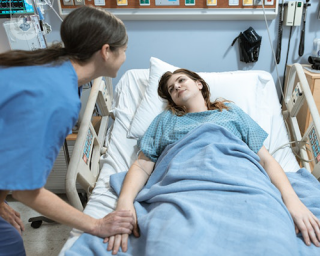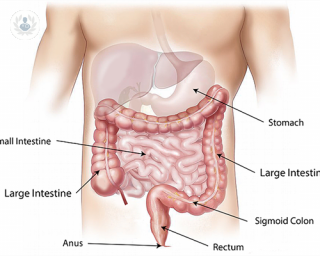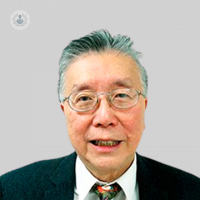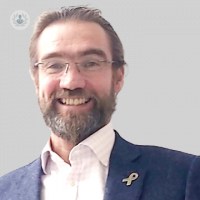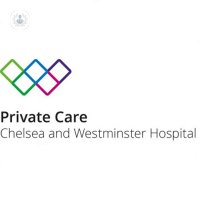Cancer
Index:
- What is cancer?
- What are the different groups of cancer?
- What are the symptoms?
- What is cancer staging?
- What are the most common types of cancer?
- How is cancer treated?
- Are cancerous lumps hard or painful?
- Is cancer genetic?
- What happens if cancer recurs?
What is cancer?
Cancer occurs when cells, which are the building blocks of the tissues and organs in the body, begin to grow uncontrollably. The body's control mechanism stops working and the old cells do not die but instead, grow out of control. They then form a mass of tissue known as a tumour, which can be benign (non-cancerous) or malignant (cancerous). There are some cancers, such as leukaemia, which do not manifest as a tumour.
Cancer can form anywhere on the body. Some types of cancer grow and quickly invade other parts of the body to form new tumours (a process called metastasis), while others remain confined to their place of origin. Benign cancers, for example, won't usually develop metastasis.
It is estimated that one in three men and one in four women will be affected by cancer over the course of their lifetime.
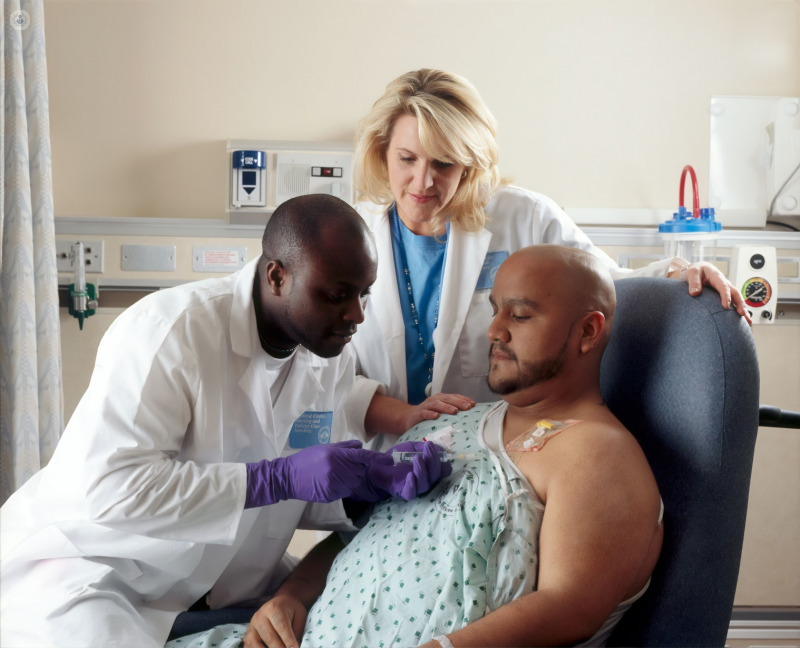
What are the different groups of cancer?
Cancer which form in specific types of cells can be divided into five categories:
1. Carcinomas:
Forming in the epithelial cells (cells that surround the body's surface), carcinomas are the most common type of cancer. The four different types of carcinomas are: adenocarcinoma (most of breast, colon and prostate cancers); basal cell carcinoma (skin cancer); squamous cell carcinoma (other type of skin cancer); and transitional cell carcinoma (some bladder, ureters and kidney cancers).
2. Lymphomas:
Developing in the lymphocytes (a white blood cell), lymphomas usually build up in the lymph nodes in the neck. The two main types of lymphomas are Hodgkin lymphomas (formed from B-cells) and non-Hodgkin lymphomas (formed from B-cells or T-cells).
3. Leukaemias:
Beginning in the bone marrow, leukaemias don't form tumours. Instead, large quantities of abnormal white blood cells build up in the bloodstream and bone marrow, forcing out healthy blood cells. The four types of leukaemias are: chronic lymphocytic leukaemia, acute myeloid leukaemia, chronic myeloid leukaemia and acute lymphocytic leukaemia.
Leukaemias are classified as either acute (fast-growing) or chronic (slow-growing). They are also named by the type of white blood cells affected: lymphocytic (developed in the lymphocytes) or myeloid (developed in red blood cells, platelets and other white blood cells - excepting lymphocytes).
4. Brain tumours:
They can form in any part of the brain, including the skull base, the brainstem, the sinuses and the nasal cavity. However, it is important to know that not all brain tumours are cancerous.
Benign brain tumours grow very slowly, with distinct borders and rarely spread. They are still dangerous, however. The most common types of benign brain tumours are: meningiomas, pituitary adenomas and schwannomas. On the other hand, malignant brain tumours are cancerous, grow quickly and invade nearby brain structures. The most common types of malignant brain tumours include gliomas, medulloblastoma and astrocytomas.
5. Sarcomas:
Originating in the bone and soft tissue (including muscles, connective tissue, blood vessels and ligaments), sarcomas are the rarest type of cancer. There are more than 70 different types of sarcomas, all of which differ depending on the location of their place of origin. Osteosarcoma, for example, forms in the bones; liposarcoma in the fat and rhabdomyosarcoma in the muscles.
What are the symptoms?
Cancer can cause various symptoms, but in many cases, these symptoms won't be related to cancer at all and instead be caused by other conditions. They may also vary depending on the type and location of the tumour.
Common signs and symptoms associated with cancer include:
- Persistent fevers or sweats
- Changes in the skin, such as yellowing, darkening or redness
- Changes in weight
- Unexplained bleeding
- Changes in your bowel habits
- A sudden lump or thickening under the skin
- Persistent cough or breathing problems
- Difficulty swallowing
Seek medical attention if you experience persistent changes in your body's natural processes or unusual, sudden symptoms. These can be an early sign of cancer.
What is cancer staging?
Staging is used to describe the size of cancer and how far it has grown. It is also important as it enables your doctor and cancer care team to understand what type of treatment plan you will need to follow. Different types of exams which include CT scans, MRIs, endoscopies, biopsies and lab tests, will help to determine the stage of your cancer.
There are two parts to cancer staging: the TNM system and the number.
TNM stands for 'tumour, nodule, metastasis.' It recognises the size of the initial cancer tumour (called the primary tumour), whether it has spread to the nearby lymph nodes and if it has spread to other parts of the body. During the TNM, your doctor will also check for other tumours nearby.
The numbers are used to divide cancer into its stage, as follows:
- Stage 1: the cancer is small and contained within the area that it started.
- Stage 2: the tumour is larger but has not yet started to spread into nearby tissues. Sometimes it might have spread into the lymph nodes.
- Stage 3: the cancer is larger and may have spread into the surrounding tissues and into the lymph nodes.
- Stage 4: it has spread into a distant organ in the body. It can also be called advanced or metastatic cancer.
In most cases, cancer is staged during its diagnosis, although in some cases it can be staged again (called restaging) after the start of treatment or if the cancer recurs.
With restaging, the new information will be added on to the original stage without replacing it. Even if it worsens or spreads, a cancer will always be referred to the stage it was appointed at diagnosis. This is done to help your doctor understand your medical progress, the prognosis and learn how different patients respond to treatment.
What are the most common types of cancer?
In the UK, the most common types of cancer are:
- Breast cancer
- Lung cancer
- Prostate cancer
- Bowel cancer
There are more than 200 types of cancer and each one is diagnosed and treated in a different way.
How is cancer treated?
The treatment of cancer depends on your individual case, including the stage that you have been diagnosed with. Some types of cancer will require a combination of treatments.
Surgery is usually the first part of the treatment plan in order to resect (remove) solid tumours if these haven't spread to other parts of the body and remain in one area. Skin cancers, lung cancers and breast cancers are usually treated this way.
If the tumour has spread to the nearby lymph nodes, these may be extracted to remove the tumour from the body.
In some cases, complete removal of the tumour may not be possible, for example if it has spread to sensitive areas of the body. In this case, the surgeon will remove as much of the tumour as possible and your doctor will then recommend chemotherapy and/or radiotherapy.
Chemotherapy, which uses drugs to kill cancer cells, can be given intravenously into the vein or orally with tablets. Eat well and take time to rest if you're undergoing chemotherapy treatment. Avoid people who are sick with a cold or the flu, as chemotherapy will debilitate your immune system.
In radiotherapy, radiation is used to kill the cancer cells and can be given in a number of ways, such as via a machine beaming radiation at the cancer site, or via radiotherapy injections into the blood.
Other types of cancer treatment include: bone marrow transplant which uses higher doses of chemotherapy; immunotherapy which helps your body's immune system fight the cancer; hormone therapy which removes or blocks cancer-fuelling hormones from the body, and targeted drug therapy.
Are cancerous lumps hard or painful?
Cancerous lumps are generally large, hard, sudden and painless to the touch. Those that can be felt from the outside of the body can appear in your neck, breasts, testicles, arms and legs. As weeks pass, the lump(s) may steadily increase in size.
Is cancer genetic?
Cancer is a disease caused by changes (mutations) to the DNA within the cells of our body. These mutations, which affect a cell's normal functions of growth and division, can instruct a healthy cell to stop preventing uncontrolled cell growth and stop repairing DNA errrors. These can cause a cell to become cancerous.
In regards to family history, you may be born with gene mutations that you inherited from your parents. However, this type of mutation only accounts for a small percentage of cancers. The majority of gene mutations that cause cancer are acquired after birth through smoking, radiation, viruses, chronic inflammation and a lack of exercise.
What happens if cancer recurs?
Cancer may come back if some cancer cells remain in your body, despite treatment. A cancer recurrence can occur in the same place where your cancer first developed or in another part of the body.
In these cases, treatment will be different from the first time as tumours that recur don't respond to treatment the same way as the initial tumour did, due to cancer cells becoming more resistant to chemotherapy.

